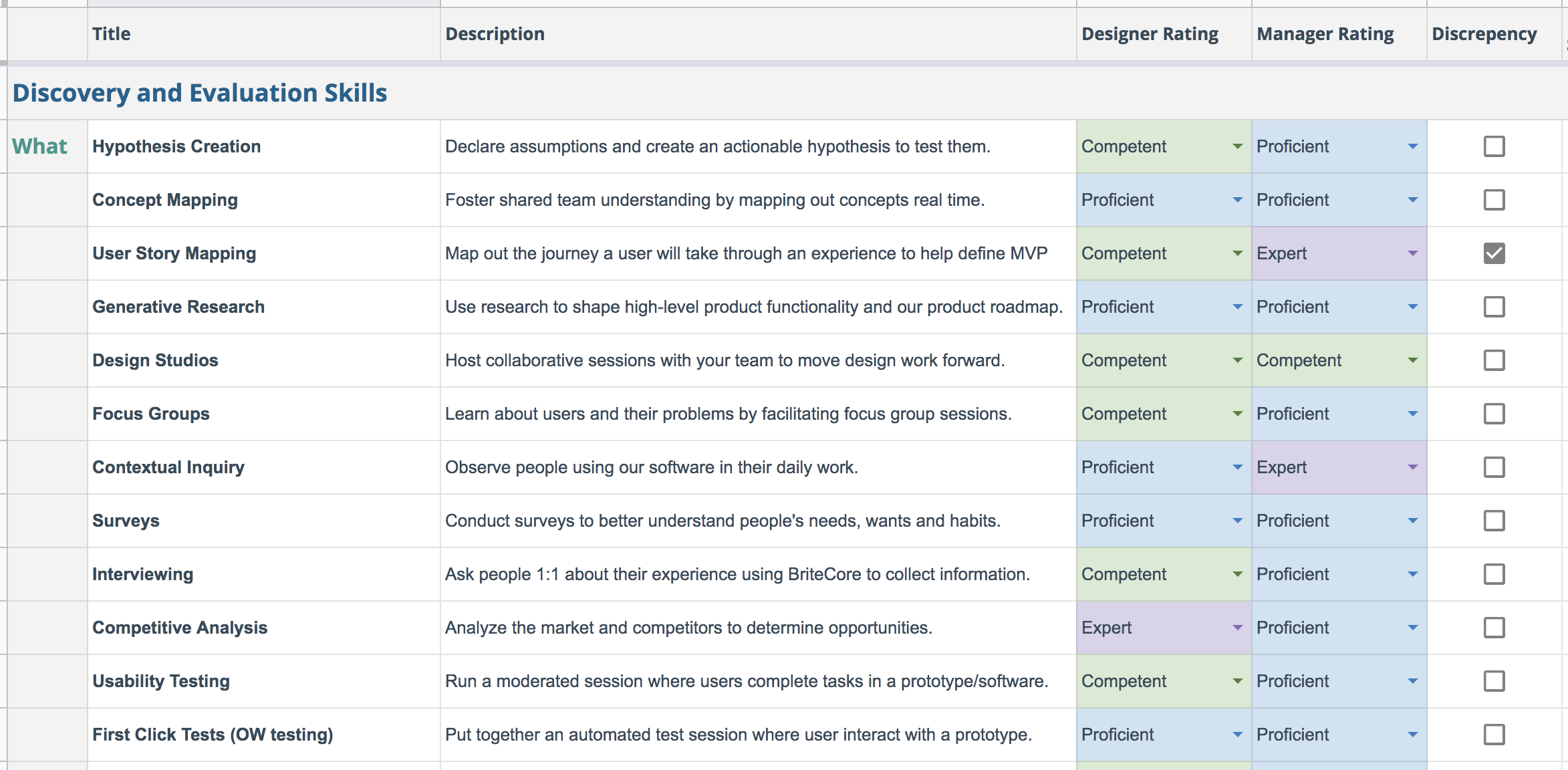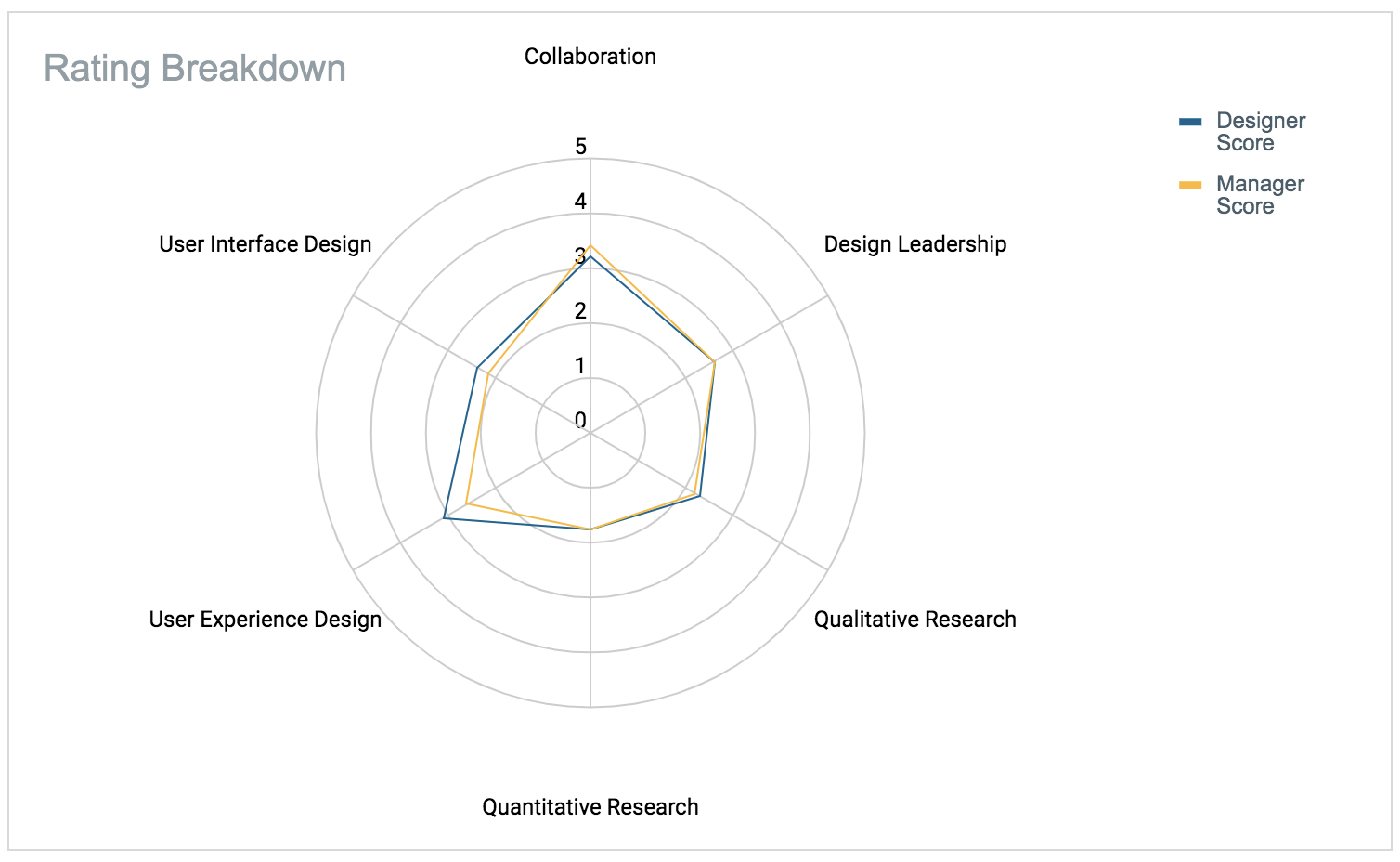While leading BriteCore's design team, I wanted to create a new way to track and improve career development for our product designers. The process we developed involves level-setting with direct reports on their abilities, and then using that information as a jumping-off point for growth goals.
Previously, I’ve been interested in skill ranking matricies that breakdown a designer’s skillset. However, those charts alone didn’t feel like a comprehensive approach to career development. At BriteCore, I’ve used performance reviews in the past to have these kinds of conversations with my team. But I also found that approach lacked intentionality and was hard to follow up on with each person.
The new approach we developed combines these techniques into a collaborative conversation around designer growth, using a google sheet (example scores shown) to drive most of this process.
Collaborative Skills Ranking
The first part of this involves having the designer rank their proficiency on a range of skills. Once they do, I hide their scores and then provide my own rankings.
An important note: This sheet is private to each designer.

Ranking skills separately is critical because it allows you align with your designer on where their skills are. The template specifically highlights areas with large divergence — a difference of multiple levels of expertise in a ranking (i.e novice vs. expert). These are the most important gaps to discuss.
Radar Chart Analysis
Each skill is grouped into one of six broad areas. Once the ranking is complete, a chart is populated based on an average of these scores for each area. This provides a way to better understand each teammates’ strengths and weaknesses. It can also provide a snapshot of your entire team’s skillset, which can help inform hiring decisions.

Growth Goals
After going through this process, I encourage the designer to think about how they want to grow, and we come back together to set goals for the next quarter. Usually designers have an idea of how they want to grow generally, but in my role as a manager I can help fill in the details, or I might know about a project they could work on that overlaps with one of their interests.
Once these goals are recorded, we then dedicate one of our recurring 1:1s every month to a goal progress update.

The Proper Manager Mindset
In the end, this about so much more than a template. The mindset you approach this process with matters, and I’d like to outline how I’ve thought about it.
First, the proper tone is essential. When someone’s entire skillset is being ranked by their manager, they are opening themselves up to constructive criticism. This is hard, even when you know feedback is coming from a good place. As a result, I try to almost over-emphasize the idea that this is really all about how they are going to develop in their career, and that this is a framework for that growth.
It’s also important to make a distinction between “growth” and “performance improvement”. Related to the tone you take, how you frame this can affect how it is perceived. If this is treated as another tool to identify low performers, it could backfire and make the team feel like everyone is under the microscope. By keeping this focused instead on career development and personal growth, I’ve found designers are candid in their rankings and willing to set ambitious goals.
Next Steps
This new process has been well received by our designers, and over the next few months, I’ll be rolling this out to other roles in our department. This includes UX Research, Frontend Development and Product Management. Also, after sharing this process with our leadership team, we are also discussing how to adapt it for other parts of the company.
Special thanks to Alex Kim my mentor and sounding board for this, and to Mac McCormick, one of our product designers who collaborated with me on this process.